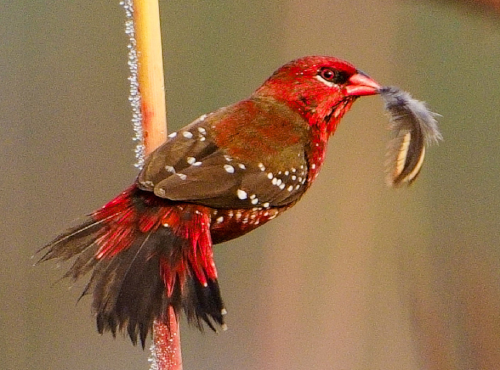At 5,000 sq km, the Little Rann of Kutch is anything but Little! Despite the enormous saline mudflats which harbor little to no vegetation, high temperatures and silt, the Little Rann of Kutch (LRK) also known as the Wild Ass Sanctuary is home to an incredible number of species. Post the monsoon the entire region transforms in to a seasonal wetland which attracts over 250 species of birds from all over the world.
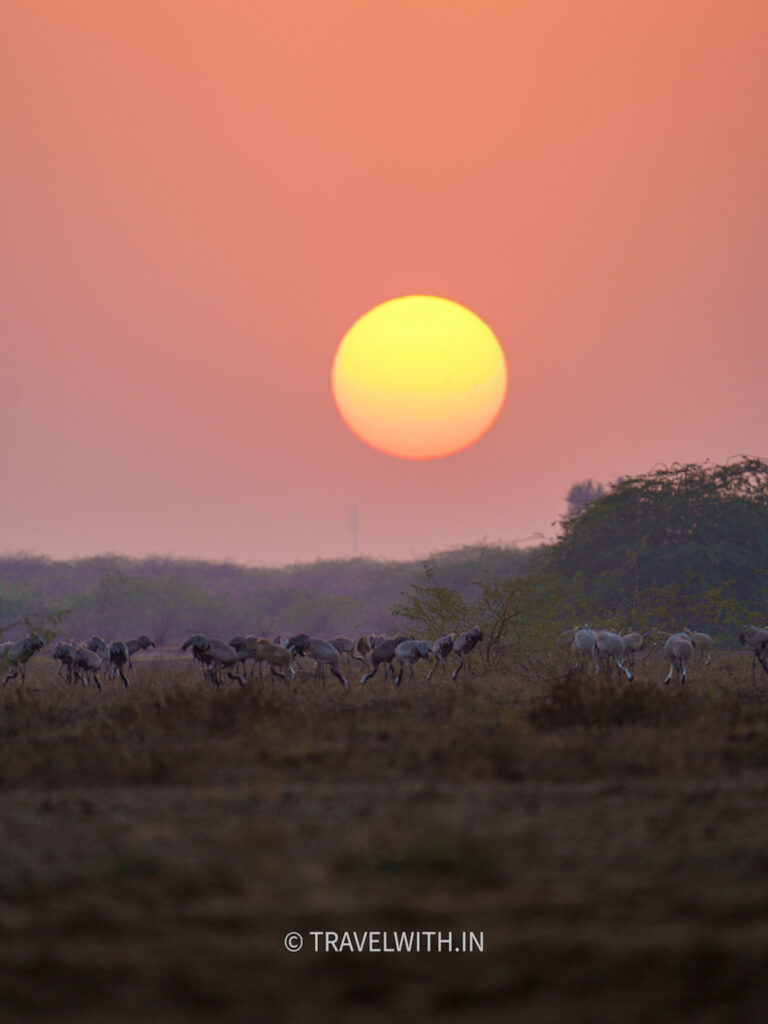
Sunset in the Little Rann of Kutch
Other than birds, LRK is home to the Wild Ass or Khur in Gujarati and a host of other mammals, reptiles and amphibians. The Wild Ass Sanctuary established in 1973 encompasses much of LRK and today this mostly barren expanse of land is the last home of the Wild Ass.
Historically, the saline desert of LRK used to be a shallow sea. Today, it is a transitional area between marine and terrestrial ecosystems. In other words, in the monsoon this desert gets connected to the Gulf of Kutch by water. Other then a few elevated plateaus the entire area is flooded during the monsoon. It is after this monsoon that salt panning is carried out by salt workers. They pump out the excess water from the salt panes and let nature evaporate out the balance, leaving behind enormous amounts of salt crystals which are then loaded on trucks for processing.
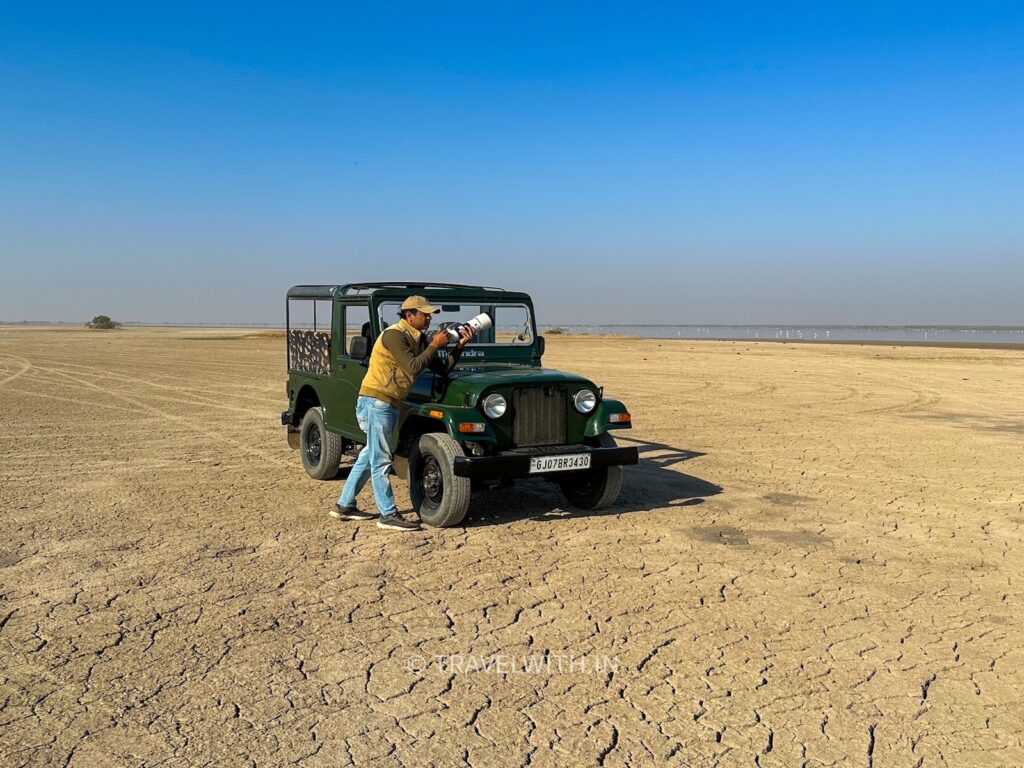
Little Rann of Kutch Landscape
Lesser Flamingos – the Sky is Pink
Other that salt panning, the region’s other major source of revenue is ginger prawn farming. Like salt panning, this industry too is highly seasonal and salt workers often double up as fishermen.
Due to this weather phenomenon and the fact that the region falls in a strategic bird migratory corridor, an estimated 70,000-75,000 birds nest in over 250 acres. The beginning of winter sees migratory birds arrive in the thousands. From Common Cranes, Flamingos, Larks to the Short-eared Owl and the Macqueen’s Bustard, the shallow salt flats and freshwater marshes sees an influx of avian visitors.
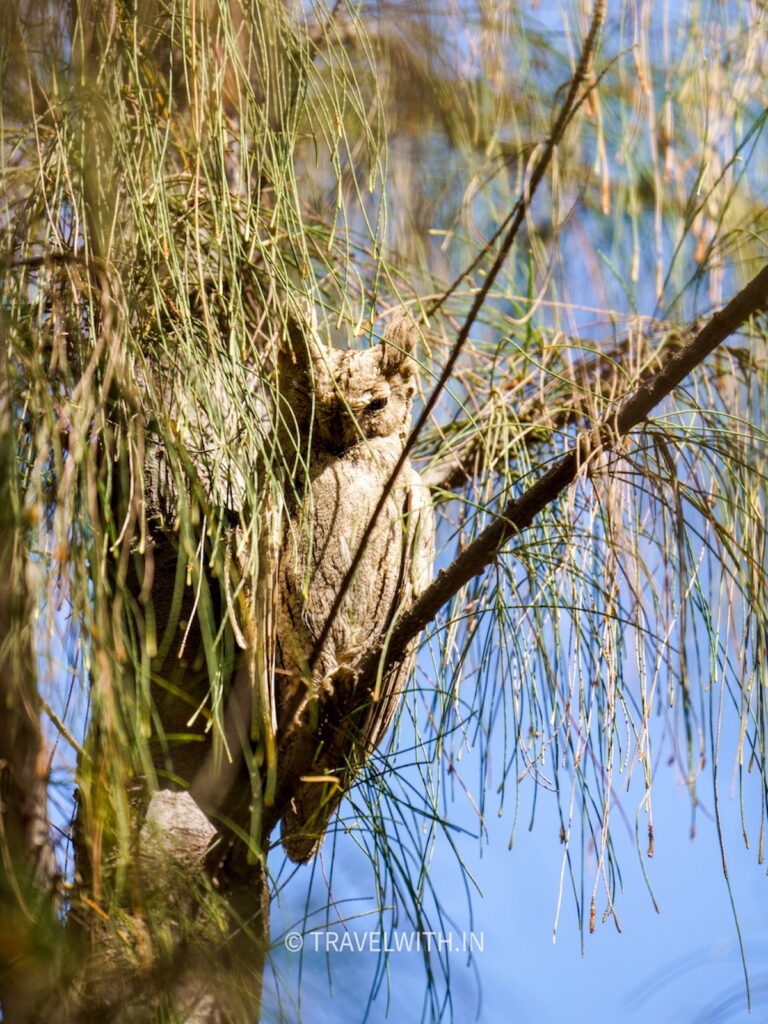
Pallid Scops Owl
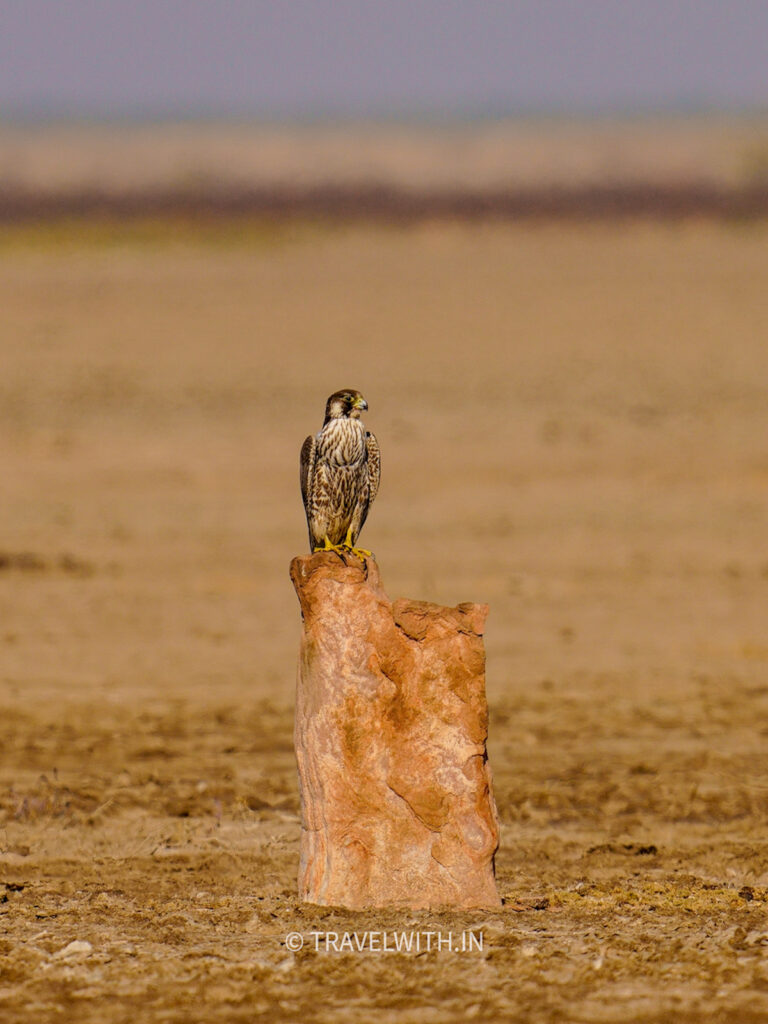
Peregrine Falcon
With such high prey density and diversity, the Sanctuary attracts several species of raptors – Steppe and Imperial Eagles, Marsh, Montague and Pallid Harriers, Red-necked, Saker and Peregrine Falcons besides others.
Other than the Wild Ass, other mammals spotted in the Sanctuary include the Jungle and Desert Cat, Striped Hyena, Indian Fox, Nil gai, Blackbucks and Indian Gazelle. Indian Wolves once plenty, are now a rare sight.
Desert Cat from Little Rann of Kutch
Short-eared Owl from Kutch
To fully understand and appreciate this plethora of wildlife and the stunning landscape that they live in, you should do a few jeep safaris in and around the Sanctuary. Safaris are for 3-4 hours in the morning and afternoons. With a naturalist in tow, get to see a bird of prey in the middle of a barren desert busy feasting on it’s morning hunt or the highly camouflaged Short-eared Owl sitting on the ground a few meters from your vehicle.
Demoiselle and Common cranes in flocks of hundreds can be heard much before you can spot them. A highlight of LRK is watching thousands of lesser and greater Flamingos very often un-disturbed in the presence of salt workers and fishermen.
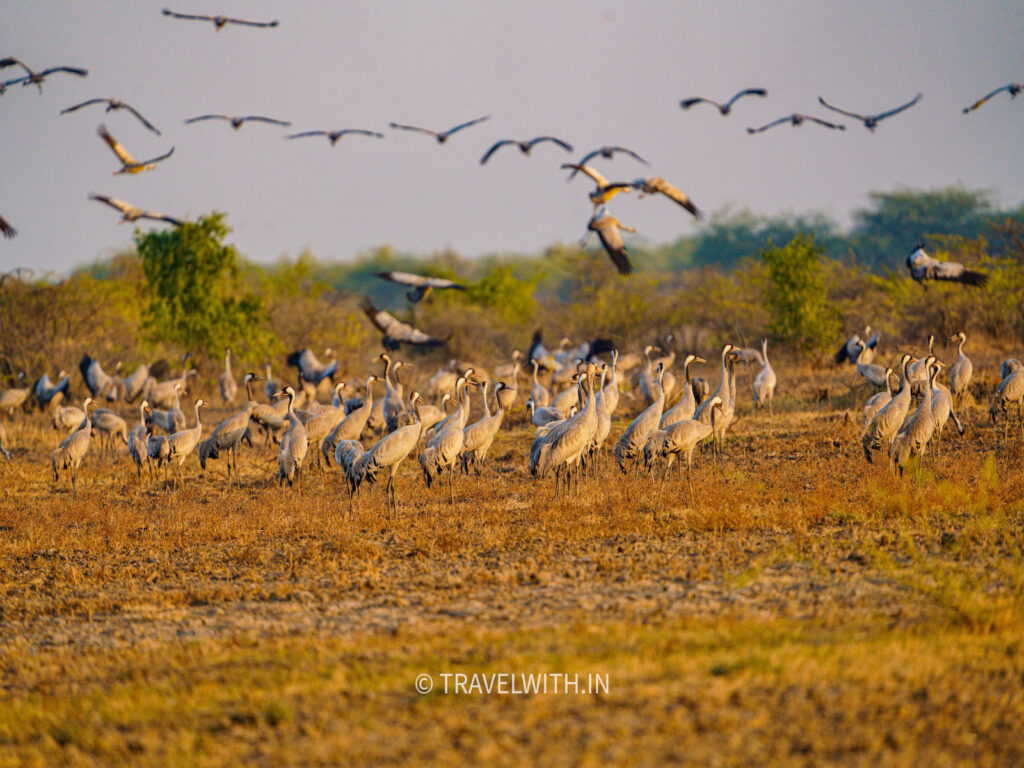
Common Cranes
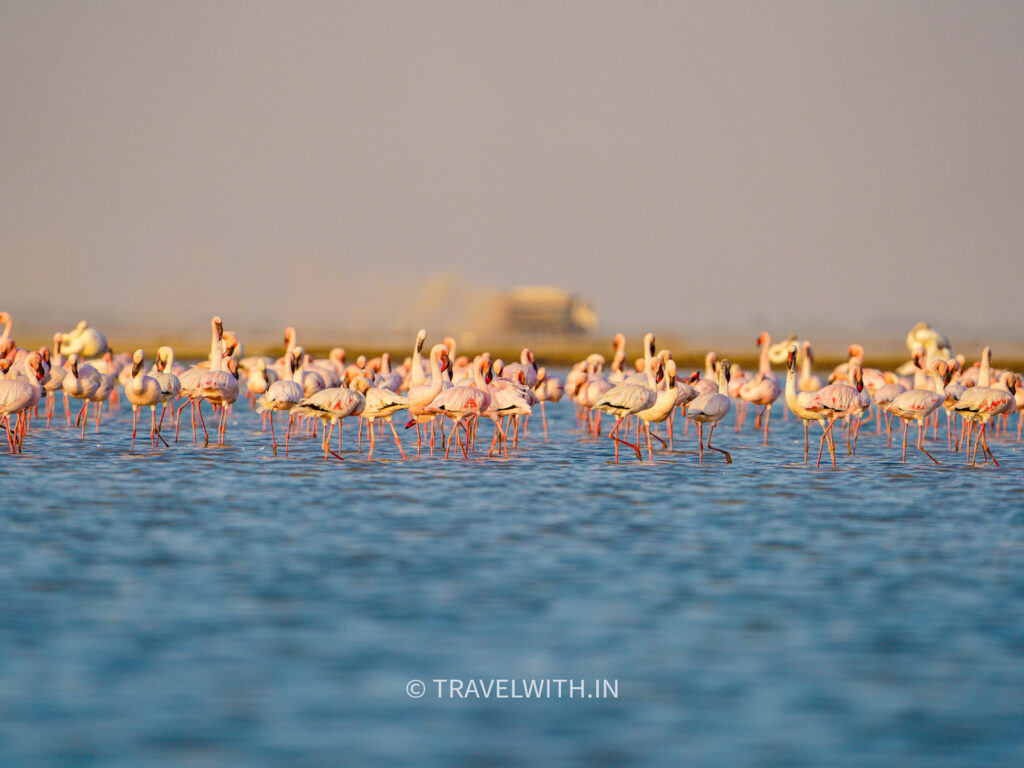
Lesser Flamingos and a salt truck in the background
Other than the rich wildlife, the region is also known for it’s rich heritage and culture. You can visit various communities such as Rebaris and Mirs that live in fringes of the Sanctuary to observe their local handicrafts and unique attire. Day trips to ancient temples and stepwells can be organized upon request as well.
The closest airport to LRK is the one in Ahmedabad (2.5 hour drive). Along with a visit to LRK you can also visit Gir National Park for the Asiatic Lion and the Blackbuck National Park in Velavadar for Indian Wolves and of course scores of Blackbucks.
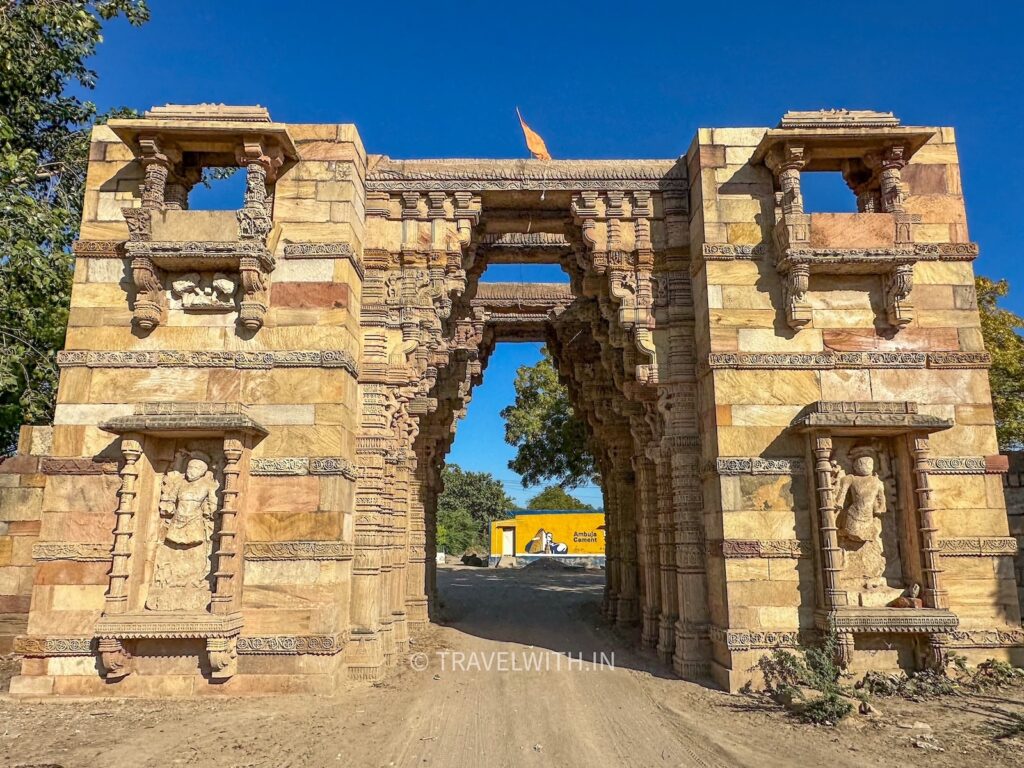
Madapol Gate, Zinzuwada



